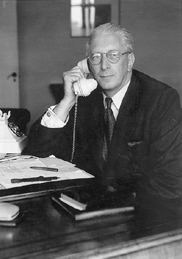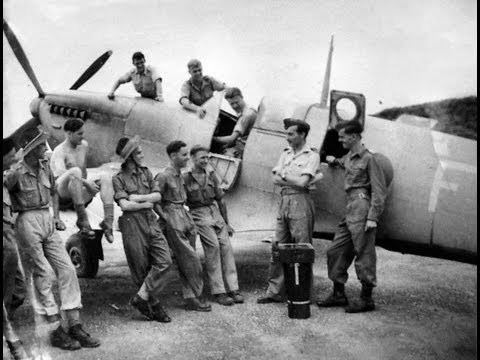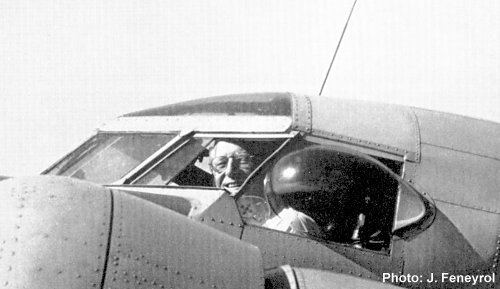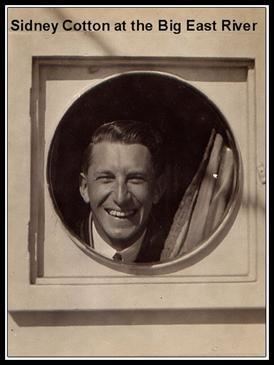Allegiance Australia | Name Sidney Cotton | |
 | ||
Commands held P.D.U. (Photographic Development Unit) Royal Air Force Battles/wars First World WarSecond World War Died February 13, 1969, London, United Kingdom Awards | ||
Years of service 1915–19171939–1940 | ||
Sidney cotton spy and aviator
Frederick Sidney Cotton OBE (17 June 1894 – 13 February 1969) was an Australian inventor, photographer and aviation and photography pioneer, responsible for developing and promoting an early colour film process, and largely responsible for the development of photographic reconnaissance before and during the Second World War. He numbered among his close friends George Eastman, Ian Fleming and Winston Churchill.
Contents
- Sidney cotton spy and aviator
- Who was the real James Bond
- Early years
- First World War
- Between the wars
- Spy missions
- Second World War
- Postwar
- References

Who was the real James Bond?
Early years

Frederick Sidney Cotton was born on 17 June 1894 on a cattle station at Goorganga, near Proserpine, Queensland. He was the third child of Alfred and Annie Cotton, who were involved in pastoralism. Cotton was educated at The Southport School in Queensland and later in 1910, he and his family went to England where he attended Cheltenham College; however the family returned to Australia in 1912. Cotton worked as a jackeroo, training to work with livestock at stations in New South Wales up until the outbreak of war.
First World War

Cotton went back to England to join the Royal Naval Air Service in November 1915. After only five hours solo flying, he qualified as a combat pilot, and initially flew Channel patrols. Cotton went on to participate in night bombing sorties over France and Germany with Nos 3 and 5 Wings. His experience with high level and low-temperature flying led Cotton in 1917 to develop the revolutionary new "Sidcot" suit, a flying suit which solved the problem pilots had in keeping warm in the cockpit. This flying suit was widely used by the RAF until the 1950s. Cotton continued with No. 8 Squadron RNAS in 1917 where he was promoted to Flight Sub-Lieutenant in June 1917. Soon after, he came into conflict with senior officers, and resigned his commission in October 1917.
Between the wars

After leaving military service, Cotton married in London a 17-year-old actress, Regmor Agnes Maclean, in October 1917, with whom he had a son. After the war he spent time in Tasmania, then returned to England where he continued his passion for flying. In 1920, he embarked on an unsuccessful attempt to fly from England to South Africa, and also made a lucky escape from a crash at the Aerial Derby. Cotton then spent three years working in Newfoundland flying various assignments.

Following the divorce from his first wife the previous year, in 1926, Cotton married 18-year-old Millicent Joan Henry whom he had met in Canada. From this time up until the outbreak of the Second World War, Cotton led a colourful and eventful life; he took part in various business activities, including an airborne seal-spotting service as well as aerial search and rescue operations for lost explorers in Newfoundland and Greenland.
Spy missions

Shortly before the Second World War, Cotton was recruited by Fred Winterbotham (then of MI6) to take clandestine aerial photographs of the German military buildup. Using his status as a wealthy and prominent private aviator currently promoting his film business (and using a series of other subterfuges including taking on the guise of an archaeologist or a film producer looking for locations), a series of flights provided valuable information about German naval activity and troop buildups. He equipped the civilian Lockheed 12A business aircraft, G-AFTL, with three F24 cameras concealed behind panels which could be slid aside and operated by pressing a button under the pilot's seat, and a Leica behind a similar panel in the wings. Warm cabin air was diverted to prevent condensation on optical surfaces. Cotton took his secretary Patricia Martin along, and she too took photographs in flight. Although his flight plans were dictated by the German government, he consistently managed to get away with flying off-track over military installations. Cotton had a very persuasive manner, and exploited any advantage he could.
In 1939, Cotton took aerial photos during a flight over parts of the Middle East and North Africa. On the eve of war, he even managed to engineer a "joy-ride" over German military airfields on one occasion, accompanied by senior Luftwaffe officer Albert Kesselring. With Kesselring at the controls, Cotton reached under his seat, operated the cameras, and captured the airfield on film. Cotton later offered to fly Hermann Göring to London for talks a week before outbreak of hostilities, and claimed that his was the last civilian aircraft to leave Berlin before the outbreak of hostilities. One biography is titled Sidney Cotton: The Last Plane Out of Berlin commemorating this escapade.
Second World War
Appointed as a Squadron Leader and honorary Wing Commander on 22 September 1939, in the same period, Cotton was recruited to head up the fledgling RAF 1 Photographic Development Unit (PDU) at Heston Aerodrome. This unit provided important intelligence leading to successful air raids on key enemy installations. With his experience and knowledge gained over Germany and other overflights, Cotton greatly improved the RAF's photo reconnaissance capabilities. The PDU was originally equipped with Bristol Blenheims, but Cotton considered these quite unsuitable, being far too slow, and he consequently "wheedled" a couple of Supermarine Spitfires. These Spitfires, later augmented by de Havilland Mosquitos, were steadily adapted to fly higher and faster, with a highly polished surface, a special blue - "PRU Blue" - camouflage scheme developed by Cotton himself, and a series of modifications to the engines to produce more power at high altitudes. In 1940, Cotton also personally made another important reconnaissance flight with his Lockheed 12A over Azerbaijan via Iraq as part of Operation Pike.
Under his leadership, the 1 PDU acquired the nicknames, "Cotton's Club" or the less flattering "Cotton's Crooks" (mainly due to Cotton's propensity to flout regulations). Cotton revelled in his reputation as unorthodox, and even had a special badge struck bearing the initials "CC-11" that signified the 11th commandment – "Thou shalt not be found out."
Cotton's aerial photographs were far ahead of their time. Together with other members of the 1 PDU, he pioneered the techniques of high-altitude, high-speed stereoscopic photography that were instrumental in revealing the locations of many crucial military and intelligence targets. R.V. Jones recounts in his memoirs how these photographs were used to establish the size and the characteristic launching mechanisms for both the V-1 flying bomb and the V-2 rocket. Cotton also worked on ideas such as a prototype specialist reconnaissance aircraft and further refinements of photographic equipment.
By mid-1940 however, Cotton had clashed with senior officials in the Air Ministry over his participation in the evacuation of British agents from France under the cover name of "Special Survey Flights." After his return from France couriering Marcel Boussac, the head of the Christian Dior garment and perfume empire, for a fee, he was removed from his post and banned from any involvement with air operations. Following several efforts to be reinstated, even involving Churchill himself, Cotton resigned his commission; he was nevertheless appointed an OBE. For the remainder of the war, Cotton acted as an unofficial consultant to the Admiralty. Under the new designation, 1 Photographic Reconnaissance Unit (PRU), based at RAF Benson, 1 PRU went on to a distinguished wartime record, eventually operating five squadrons out of a number of bases. Succeeding commanding officers would emulate the spirit and innovative techniques pioneered by Cotton.
In September 1940, Cotton's modified Lockheed 12A (G-AFTL), was severely damaged in an air raid at Heston Aerodrome. It was rebuilt by Lockheed, sold in British Honduras, and in 1948 registered in the US as N12EJ; the aircraft resided in Florida in 1992. His postwar Lockheed 12A (G-AGTL) also survives in France in 2005.
In September 1940, Cotton pursued the idea of an airborne searchlight for night-fighters, that he termed 'Aerial Target Illumination' (ATI). He enlisted the help of William Helmore, and they jointly took out patents on the techniques (GB574970 and GB575093). Helmore, a serving RAF officer, then sponsored the development of what became known as Turbinlite.
Postwar
In 1948, Cotton spent time in the service of Osman Ali Khan, the last Nizam of Hyderabad State. Using unarmed Avro Lancastrian transports, he organised airlifts of armaments, supplies and medicines from Hyderabad State during the advance of the Indian Army into Pakistan. During formation executing Operation Polo, he was hired by HH Prince Mohammed Bakhtawar Khan (Direct descendent Kaim Khani Dynasty) and his eldest son H. E. Prince Mumtaz Ali Khan (Kaim Khani) - First Muslim kaimkhani MNA Hyderabad, Deccan, India to bring urgent Gold reserves for their close friend and founder of Pakistan Muhammad Ali Jinnah to establish the urgent banking structure to pay urgent expenses on the formation of the new country and Government. For his activities in Hyderabad, he was convicted and fined 200 pounds in a British Court.
In 1951, Cotton married Thelma "Bunty" Brooke-Smith in what was his third marriage. Thelma was his former secretary, with whom he was to have another son and daughter.
In 1955, Cotton's death was erroneously reported in Flight magazine. A subsequent issue reported: "MR. F. SIDNEY COTTON has goodhumouredly characterised as "greatly exaggerated" the report of his death, quoted in our issue of 9 September from Australian sources. Apparently there was confusion with the name of a relative who was concerned with the design of aircrew pressure suits. Mr. Sidney Cotton, whose name is associated with the Sidcot flying suit, is in this country, and very much alive."
Although Cotton was very rich at various times in his life, his business dealings were dogged by bad luck and (in at least one case) doubtful behaviour by a business partner. He was reluctant to profit from his wartime innovations, even waiving his patent rights on the Sidcot suit. As with many buccaneering wartime "larger-than-life" characters, the postwar environment did not suit him at all. He dabbled in oil exploration, civil engineering and even gun-running, but died penniless. Cotton's life story was recorded in the book he wrote with Ralph Barker shortly before his death, Aviator extraordinary: the Sidney Cotton story.
On 13 February 1969, Cotton died in London. The principal monument to Cotton is a plaque marking his grave at Tallegalla cemetery near Brisbane. He is also memorialised in the name of the Sidney Cotton bridge on the O'Connell River, south of Proserpine, Queensland.
